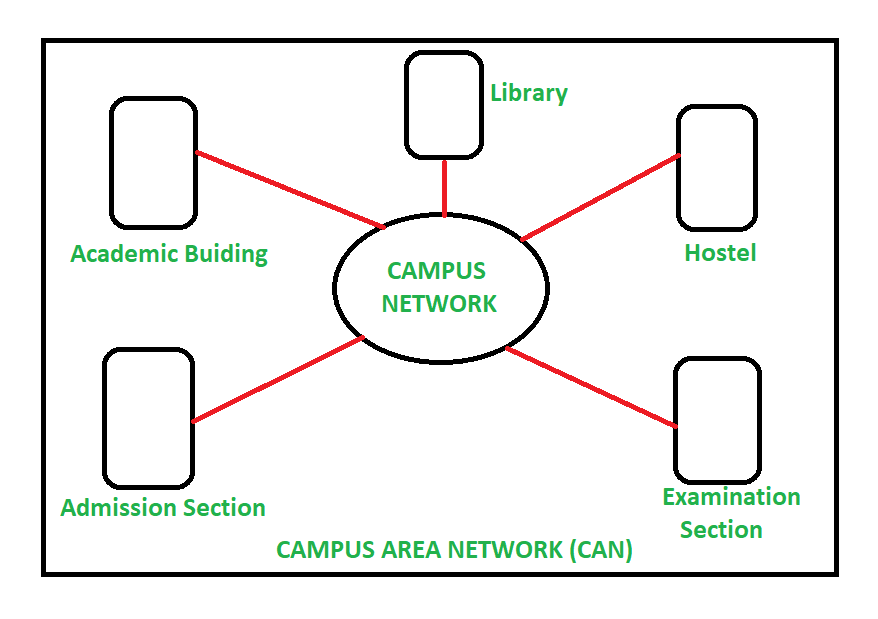Overview of Campus Area Network (CAN)
Last Updated :
08 Jul, 2020
Campus Area Network (CAN) is a group of interconnected Local Area Networks (LAN) within a limited geographical area like school campus, university campus, military bases, or organizational campuses and corporate buildings etc. A Campus Area Network is larger than Local Area Network but smaller than Metropolitan Area Network (MAN) and Wide Area Network (WAN).
This Campus Area Network also called as Corporate Area Network. Sometimes this network is also referred as Residential Network or ResNet as it is only used by residents of specific campus only. Campus Area Network is network of interconnected Local Area Networks where these LANs are connected via Switches and routers and create a single network like CAN. Campus Area Network covers areas of around 1 to 5 km range and it can be both wired or wireless connectivity.
Example of CAN :
Let’s think about a university where university networks interconnect academic building, admission building, library, account section, examination section, placement section etc of an institution when connected with each other combine to form Campus Area Network (CAN).
The below figure illustrates a Campus Area Network :

Infrastructure of CAN :
Within a limited geographical area, LANs are interconnected with help of Switches and Routers and connects buildings to buildings of a single campus where all networking resources like wiring, hubs, switches, routers etc are owned by organization itself. In this, they use same kind of technologies like Local Area Network only interconnection between different buildings is there. Nodes in a campus network are interconnected by means of Optical fiber media, i.e., Fiber optics and takes advantage of 10-Gigabit Ethernet technology. Besides this 10-Gigabit ethernet technology, Wi-Fi hotspots and hot zones are different ways of accessing network.
Benefits of CAN :
- Speed –
Communication within a CAN takes place over Local Area Network (LAN) so data transfer rate between systems is little bit fast than Internet.
- Security –
Network administrators of campus take care of network by continuous monitoring, tracking and limiting access. To protect network from unauthorized access firewall is placed between network and internet.
- Cost effective –
With a little effort and maintenance, network works well by providing fast data transfer rate with multi-departmental network access. It can be enabled wirelessly, where wiring and cabling costs can be managed. So to work with in a campus using CAN is cost-effective in view of performance.
Finally, we can say Campus Area Network is a cost-effective and easy to implement within a specific geographical area or certain kilometers of locality. And it is very helpful to campuses like colleges, universities, corporate organizations, etc.
Like Article
Suggest improvement
Share your thoughts in the comments
Please Login to comment...